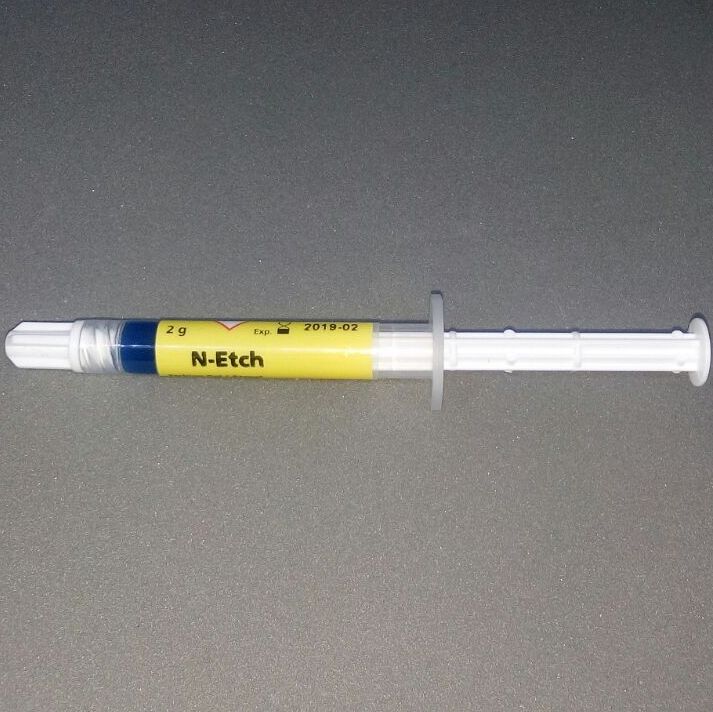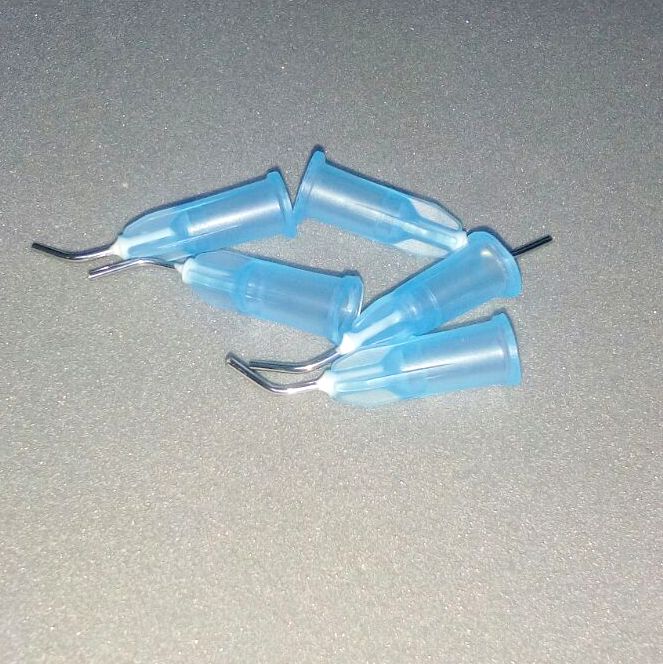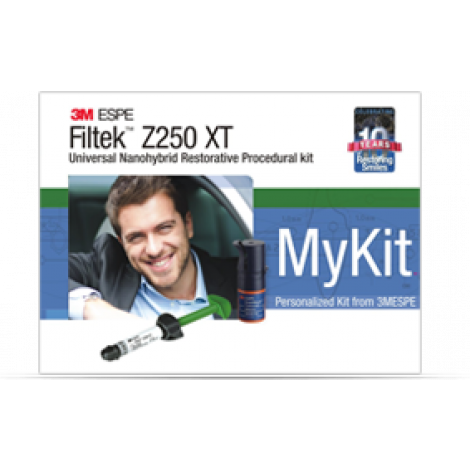Description
N-Etch is an etching gel containing 37% phosphoric acid. N-Etch is used for enamel etching and dentin conditioning in conjunction with composite restorations, sealants and the adhesive luting of indirect all-ceramic or composite restorations.
N-Etch is the best partner for Tetric N-Bond for enamel etching and dentin conditioning.
Indications
- N-Etch is a gel used for enamel etching and dentin conditioning in conjunction with adhesives, composites, luting materials and fissure sealants.
Composition
- N-Etch contains phosphoric acid (37 wt.% in water), thickeners and pigments.
- Distinct blue color for a strong contrast to the tooth which minimizes the risk of over-etching.
- Consistent material thickness for a quick and effective application
- Angled metal tip for exact application
- Storage temperature: 2-28 °C (36-82 °F)
- N-Etch recommendation: Refrigerate large stocks at 2-8 °C (36-46 °F)
Direct Restorations
- Step 1.
Select the shade For facilitated access to the treatment field, the lip and cheek retractor OptraGate can be used.
- Step 2.
Adequate relative or absolute isolation using suitable auxiliaries, such as OptraGate or OptraDam Plus, is required.
- Step 3.
Prepare the cavity according to the requirements of the adhesive technique.
- Step 4.
Clean the cavity with water spray.
- Step 5.
Air dry the cavity.
- Step 6.
Apply a pulp protector (calcium hydroxide material, e. g. ApexCal) if needed; only cover areas close to the pulp and subsequently apply a pressure resistant cement (e.g. Vivaglass Liner).
- Step 7.
Place a matrix and an interdental wedge, if required.
- Step 8.
Apply N-Etch on enamel and subsequently on dentin; and allow a reaction time of 15 seconds. Afterwards, thoroughly rinse off the etchant with water spray and dry the tooth surfaces with oil-free air. Avoid excessive drying of the dentin. The etched enamel surface should have a chalky white appearance. If this is not the case, repeat the etching procedure using a shorter reaction time. If the tooth surface becomes accidentally contaminated (e. g. with saliva), repeat the etching procedure with a reaction time of max. 10 seconds. The reaction time on unprepared enamel (e.g. fissure sealants) is 30-60 seconds. If the enamel is selectively etched, use a reaction time of 15-30 seconds.
- Step 9.
Tetric N-Bond. Dispense the desired amount of Tetric N-Bond into a mixing well and apply it using a disposable applicator (e.g. Vivadent Applicator Brush). Protect the adhesive from light (e.g. VivaPad). Close the bottle immediately after each use. A new disposable applicator must be used for each application. Apply a thick layer of Tetric N-Bond on the enamel and dentin surfaces, using the enclosed application brush. Brush the material gently into the dentin for at least 10 seconds. Avoid insufficient coverage of the cavity and apply additional material, if required. Remove excess material and the solvent by a gentle stream of air so that the adhesive completely covers the enamel and dentin without pooling.
- Step 10.
Light-cure Tetric N-Bond according to the curing time recommendations below. A shiny tooth surface prior to the application of the composite shows that all surfaces are completely covered.
- Step 11.
Apply Tetric N-Flow in layers of max. 2 mm or 1.5 mm (Dentin shade) and light-cure according to the curing recommendation indicated below. Apply Tetric N-Ceram in layers of max. 2 mm or 1.5 mm (Dentin shade) and contour/adapt the material to the cavity walls using a suitable instrument (e.g. OptraSculpt). Polymerize each layer individually according to the table below. Hold the light emission window as closely as possible to the surface of the restorative material.
- Step 12.
Finish the restoration with suitable finishers or fine diamonds. Subsequently, check the occlusion. Polish with silicone polishers (e.g. OptraPol).









